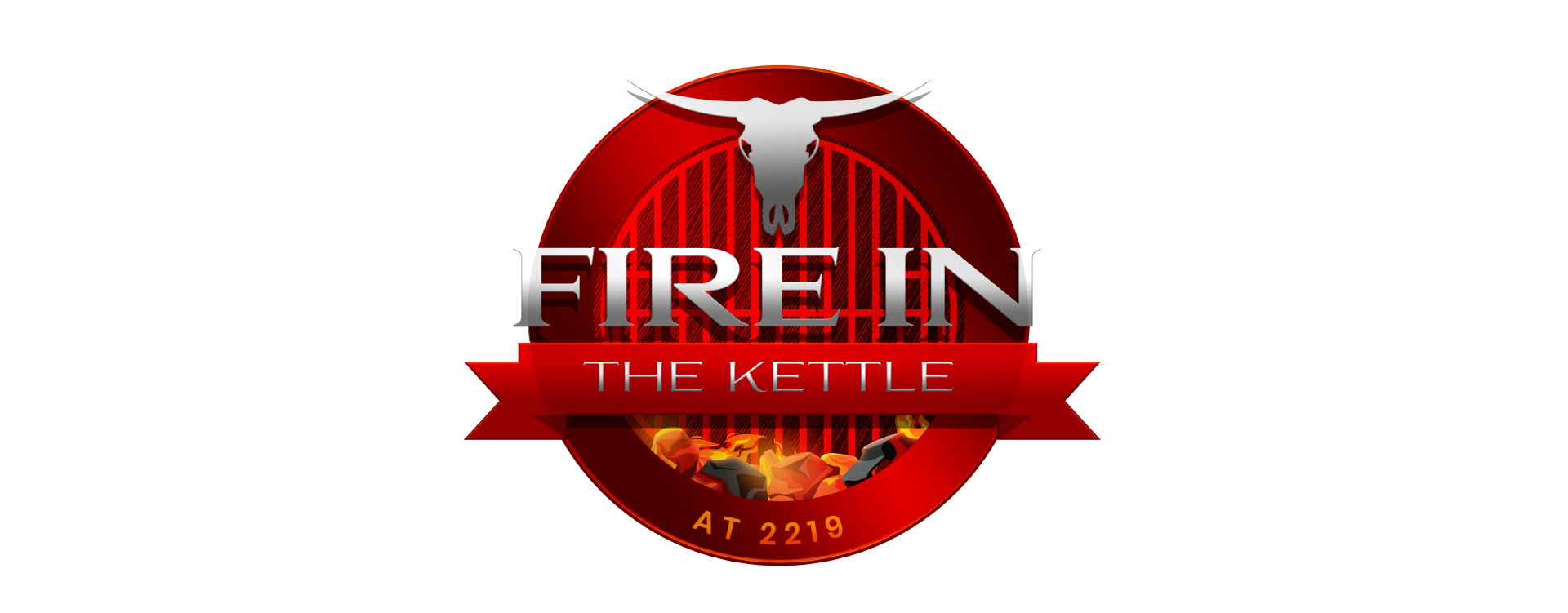A Guide to the Cuts of Beef Part Two
- Richard Reynolds Jr.

The Purpose of the Post:
A Guide to the Cuts of Beef Part Two is the second installment in a series of blog posts focusing on understanding the different cuts of beef that come from a cow (steer). If you haven’t had a chance to read the first post, “A Guide to the Cuts of Beef Part One,” you can find it here.
In the first post, I emphasized the importance of comprehending the various cuts of meat derived from a half side of a cow (steer). I covered the eight primal cuts and their sub-primal cuts, offering insights into their characteristics, usage, and examples. The focus was primarily on the Front Quarter, particularly the rib and plate section, which includes cuts like ribeye steak, prime rib, and short ribs—renowned for their rich flavor and tenderness.
It’s crucial to note that a side of beef is divided into quarters between the fifth and sixth ribs. The upper section, known as the Front Quarter, encompasses cuts like the rib and plate, while the lower section, the Hind Quarter, includes cuts like the Chuck.
What is the difference:
I want to take a moment to explain why different cuts of beef require various preparation methods. The muscles that a cow (steer) uses more frequently tend to be tougher and more muscular, necessitating longer cook times or alternative cooking methods to break down the connective tissue and render them tender. Cuts from the hind quarter, such as the sirloin and round, often demand lengthier cooking times or techniques like braising or slow cooking to achieve desired tenderness. Conversely, cuts from the front quarter, like those from the rib and chuck areas, are naturally more tender and lend themselves well to quicker cooking methods such as grilling or pan-searing. Understanding the distinct characteristics of each muscle can significantly impact how you prepare and cook various cuts of beef.
The Chuck Portion/Front quarter:
We will now turn our focus to continuing with the processing of the Front Quarter of the Cow (Steer). The Remaining cuts of beef from the Chuck Portion/Front Quarter contain the Following:
- Beef Shank
- Brisket
- Beef Arm Roast
- Flat Irons which come from the Top Blade
- Chuck Eye Steaks
- Boneless Chuck Roasts
- Neck
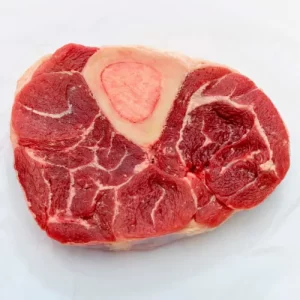

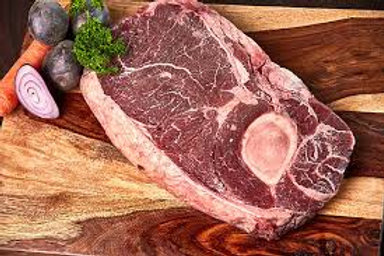
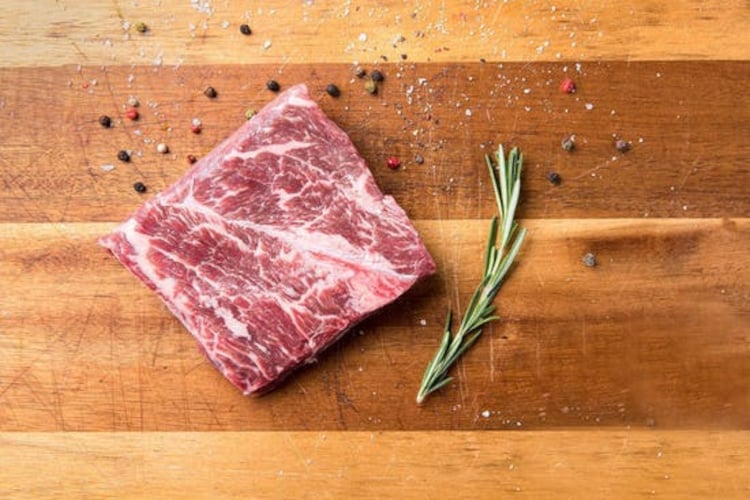
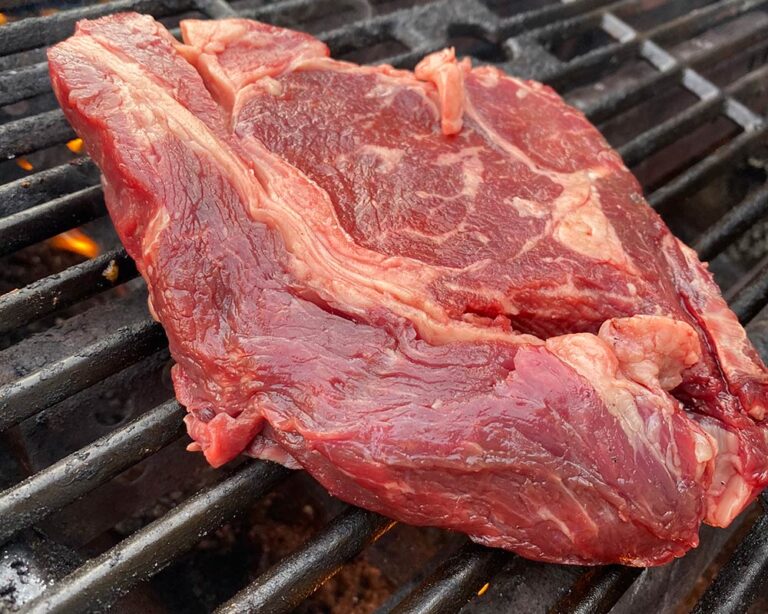
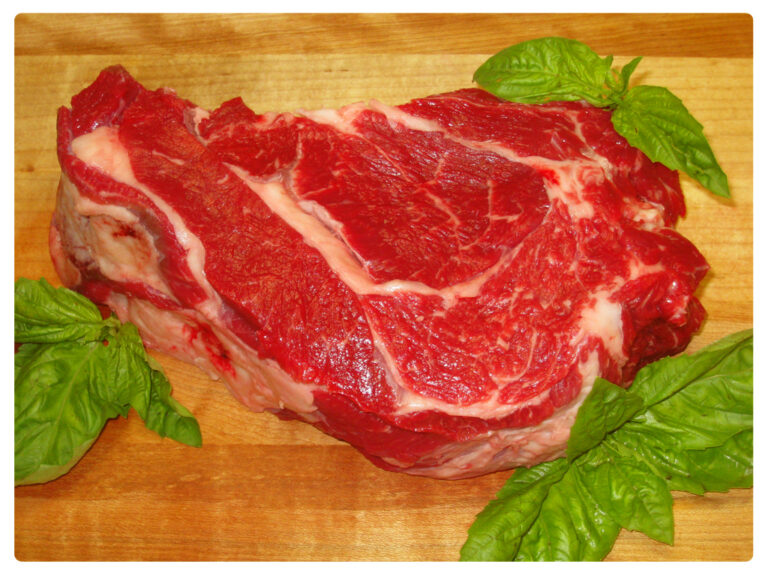
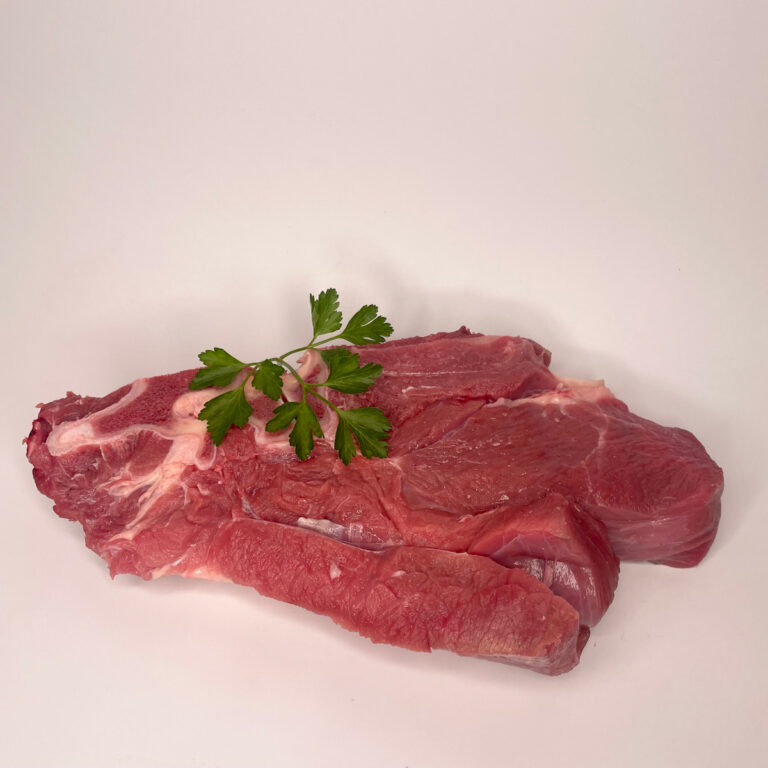
Chuck Portion location:
It is important to note that the Chuck portion is situated between the neck and the shoulder blade. This section is known for containing tougher but more flavorful cuts that are often suitable for slow cooking methods like braising or stewing to achieve tenderness. The first step in processing the Chuck section involves using a bandsaw to separate the Brisket and the Shank from the remainder of the Chuck. Subsequently, the butcher will use a boning knife, usually around six to eight inches in length, to further separate the Shank from the Brisket.
Beef Arm Roast:
The next step involves the use of a bandsaw, where the butcher or meat processor will cut some Beef Arm Roasts from the chuck. When utilizing a bandsaw for this task, the chuck portion is typically oriented perpendicular to the bandsaw blade. In other words, the butcher positions the chuck so that the blade of the bandsaw cuts across the chuck horizontally, thereby separating the arm roasts from the chuck. This method allows for efficient cutting of the meat into the desired portions. It is important to note that during the process of cutting Arm Roasts, the butcher or meat processor will also obtain short ribs. These short ribs are typically cut towards the end of the Arm Roast.

Neck and chuck portion:
The next step involves using the bandsaw to remove the neck from the Chuck portion. The butcher or meat processor will position the Chuck so that its face is facing the bandsaw. The size of the neck portion can vary depending on the specific cut being made and the preferences of the butcher or consumer. Generally, the neck portion of the Chuck is relatively small compared to other cuts within the chuck. It typically includes the neck bones and surrounding meat, which can vary in size depending on factors such as the size of the animal and the specific cutting technique being used. However, it’s important to note that the exact dimensions of the neck portion can vary and may be adjusted based on the desired final product. Once the neck is removed, the butcher or meat processor is left with the Chuck portion. It’s worth mentioning that in a future blog post, I will discuss other methods and uses for the neck portion. However, for the sake of this blog post, the butcher or meat processor will use the trimmings from the neck for ground beef.
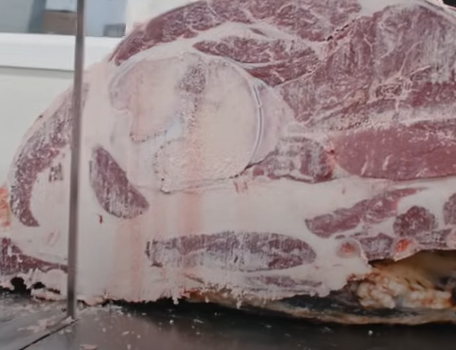
The beef arm:
The butcher or meat processor will now prepare the Arm Roast to be cut into smaller Boneless Beef Arm Roasts. To trim the Arm Roast, the butcher or meat processor will use a boning knife, usually six to eight inches in length, and make a cut as close to the middle of the Arm Roast. The section of fat and meat displayed on the right side of the first image below will be removed and later trimmed into short ribs.
These short ribs that come from the Arm Roast are typically four bones long, as displayed in the third image below.
It is important to note that the butcher or meat processor will normally get five Beef Arm Roasts from half of a beef. Two of them are bone-in, and the other three are boneless.
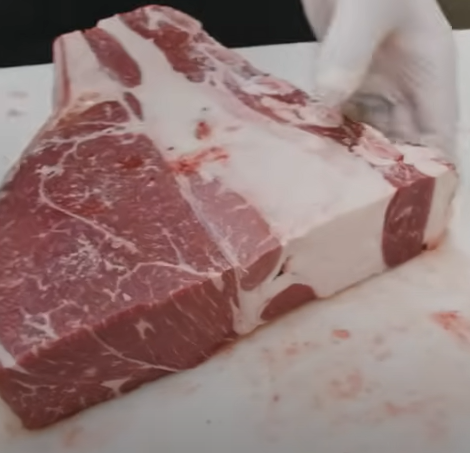
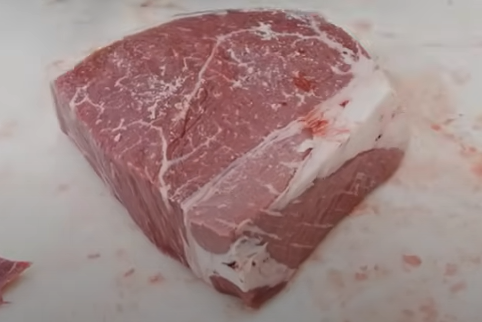

The Brisket:
It is now time to get started writing about the butcher or meat processor trimming the Beef Brisket from the remaining Chuck Portion. The standard way to buy a brisket is boneless; however, you can request from your butcher or meat processor to leave the bone on the brisket. For the purposes of this blog, the bone will be removed from the brisket. The brisket is actually located on the front underside of the cow (steer), just below the chuck portion. It is a tough cut of meat that comes from the breast or lower chest area of the animal. This is why the brisket requires low and slow cooking to achieve tenderness.
The butcher or meat processor will gently pull the brisket muscle away from the sternum bone. When discussing brisket, the term ‘Packer Brisket’ should come up in conversation with your butcher or meat processor, especially if your plan is to smoke your brisket. A ‘packer brisket’ cut includes both the flat and the point muscle, as well as a layer of fat known as the fat cap. It is called ‘packer’ because it is typically sold in large, wholesale packs by meat packers or wholesalers. This cut is popular among barbecue enthusiasts and pitmasters for its versatility and potential for creating flavorful smoked brisket.
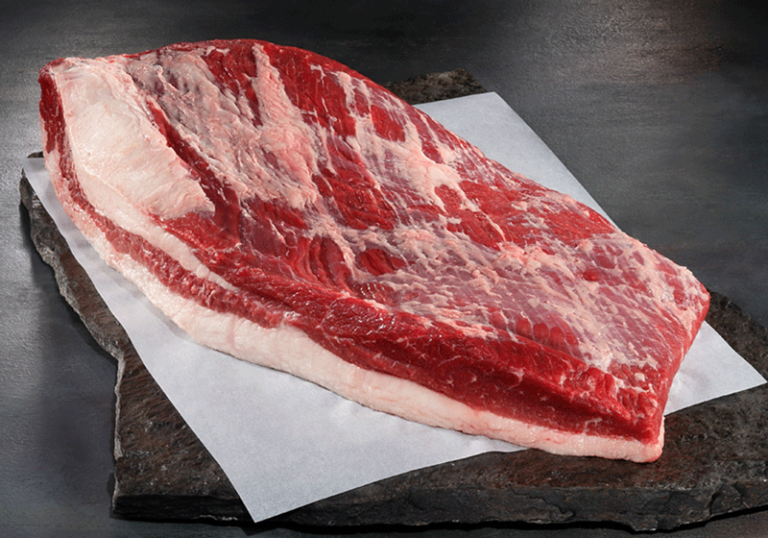
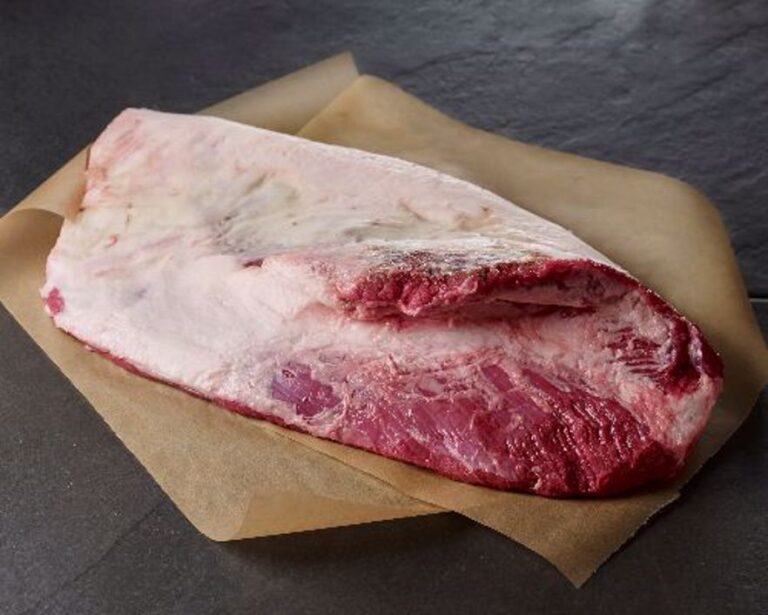
The remaining chuck portion:
Let us now turn our attention to the remaining portion of our Beef Chuck. This section will yield several cuts that the butcher or meat processor will remove using a six-to-eight-inch boning knife:
- Flat Iron
- Denver
- Chuck Eye Steaks
- Boneless Chuck Roast
- Blade Steak
- Mach Tender
As we move forward, it’s important to consider the various cuts and their characteristics. Earlier, we discussed the removal of the fat cap from the Blade Roast, revealing the Mach Tender and exposing the shoulder blade. Now, let’s delve deeper into these aspects.
Top Blade fat cap:
The butcher will begin by removing the fat cap from the top of the Blade Roast. The Blade Roast, which is located under the fat cap, is cut from the shoulder area of the cow (steer), specifically from the Chuck portion. While the fat cap is typically discarded, it does have some valuable uses in cooking. As the saying goes, ‘fat is flavor.’ Some cooks may choose to render the fat cap down into beef tallow, a versatile cooking fat.
I want to take a brief step back here to discuss two things. First, once the fat cap is removed from the Blade Roast, it exposes the Mach Tender. Second, the removal of the fat cap also exposes the shoulder blade. While I will explore the Mach Tender in more detail later in this post, it’s crucial to highlight the significance of the shoulder blade at this point. Also known as the scapula, the shoulder blade runs diagonally across the upper part of the cow’s body within the chuck portion. It extends from the front to the back of the animal, angling downwards towards the ribcage.
Flat Iron Steaks:
Next in the trimming process is the removal of the Top Blade Portion to create Flat Iron Steaks. The butcher or meat processor will use a hook to aid in separating the Top Blade Portion from the Chuck. It’s worth noting that the Blade Bone can be left intact in these roasts, resulting in a Chuck Blade Roast, essentially a bone-in Chuck Roast. However, for our discussion, the Top Blade Portion will be used specifically for Flat Iron Steaks. This decision is made because cutting a bone-in chuck roast from the Top Blade Portion would preclude the creation of Flat Iron Steaks. The Top Blade section is exceptionally tender because it comes from the front quarter or the front of the cow (steer), which might not be expected to be tender since most high-quality steaks come from the Hind Quarter. However, because the Top Blade is a muscle located on the top of the shoulder blade and not heavily used by the cow (steer), it is what makes the Flat Iron and the Top Blade so tender.
The Remaining Parts of the Chuck Portion:
Some additional steps in the trimming process involve removing the Knuckle Bone and the Shoulder Blade bone from the Chuck Portion. The butcher or meat processor will begin by removing the Knuckle Bone, followed by the delicate task of extracting the Mach Tender. Once these objectives are accomplished, attention turns to removing the Shoulder Blade. With the shoulder blade removed, the Chuck Portion is left with prized cuts such as Chuck Eye Steaks, Boneless Chuck Roasts, the Chuck Roll, and the Denver Steak.
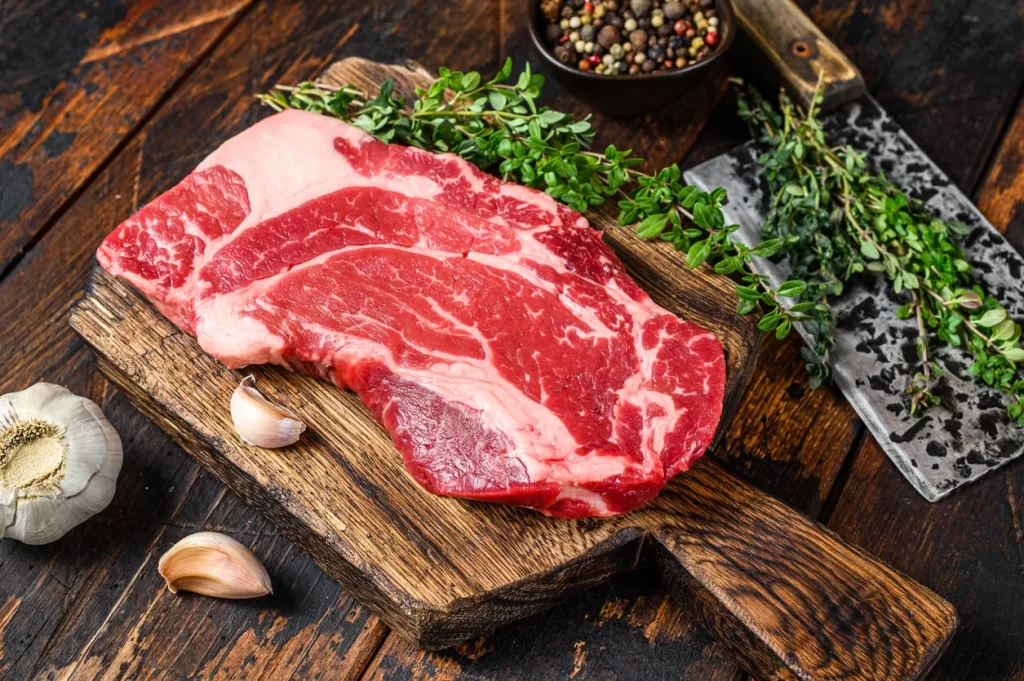
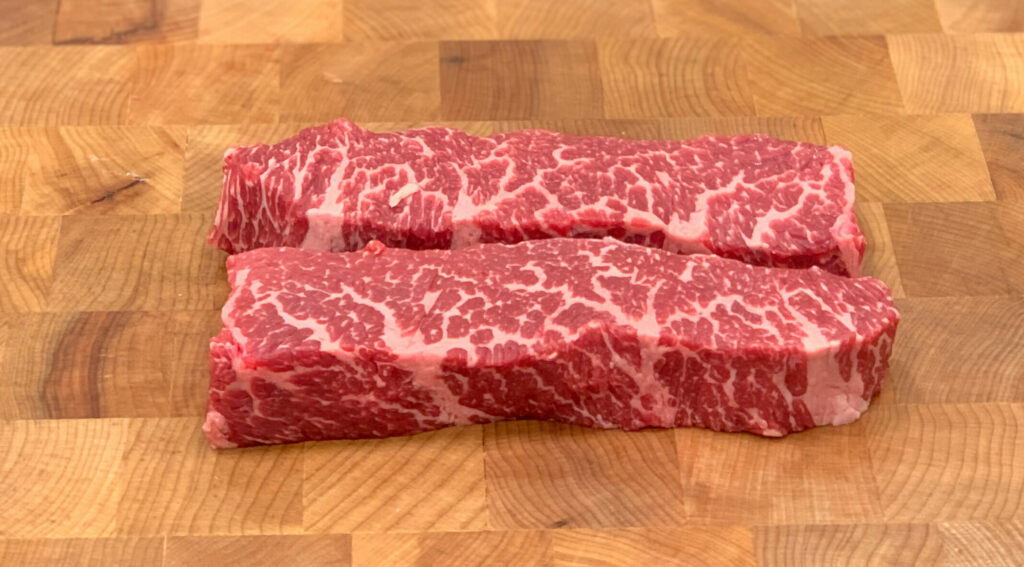
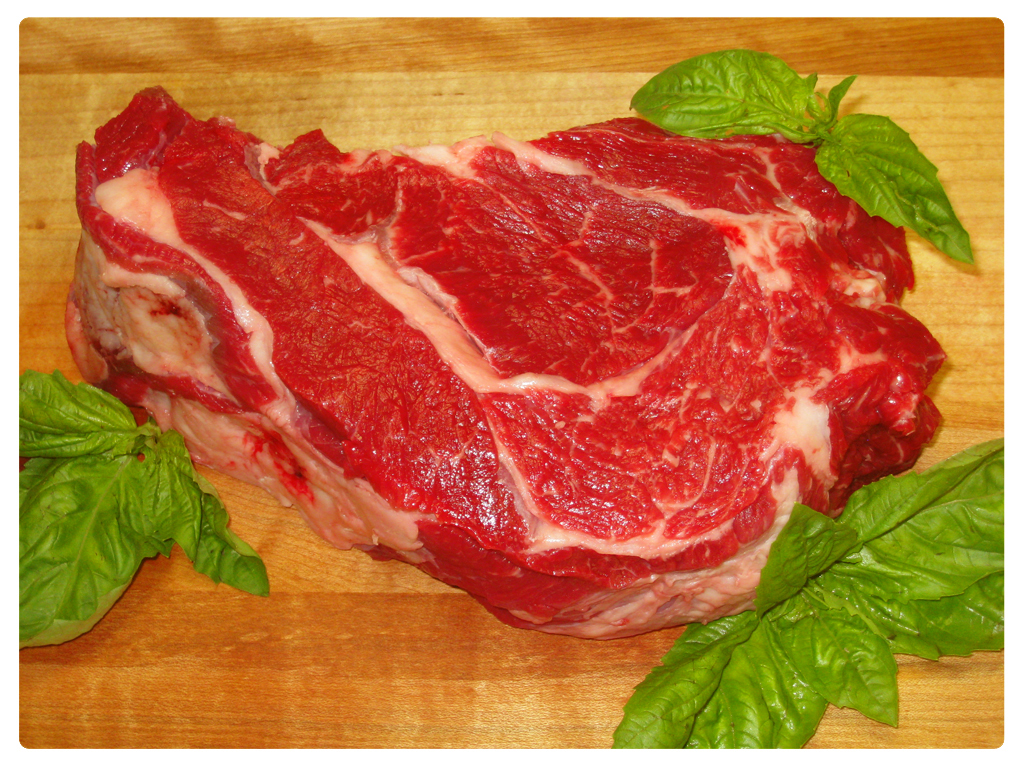
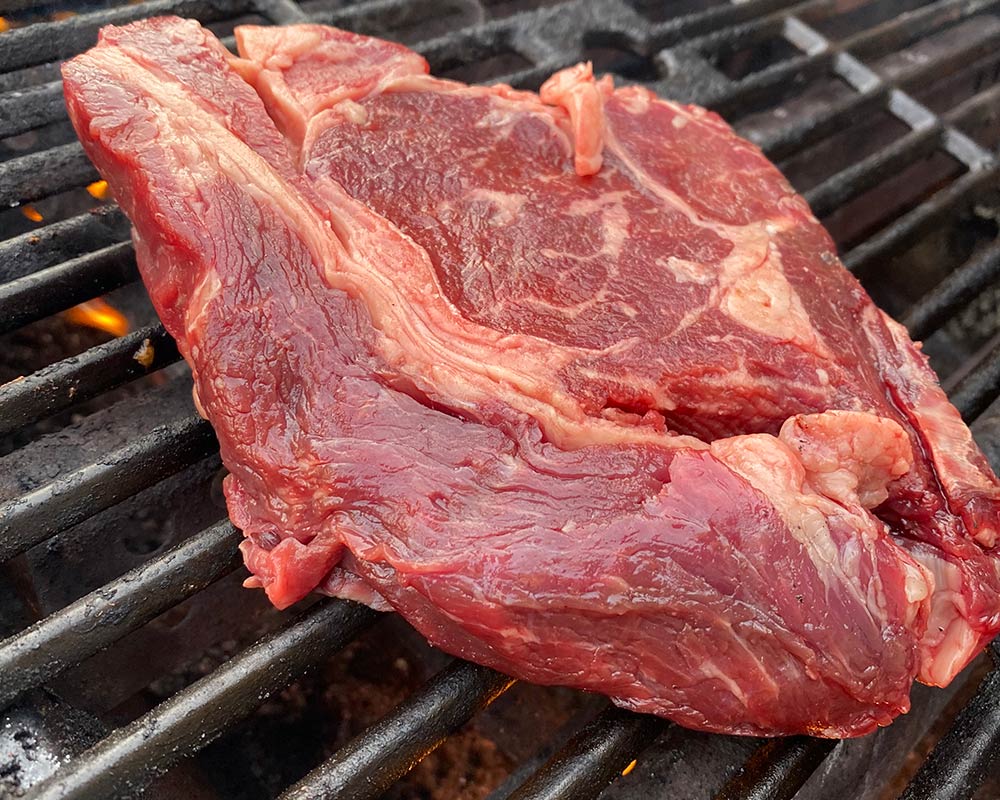
The Chuck Roll:
The chuck roll is well-marbled, which contributes to its rich flavor and tenderness. Marbling refers to the intramuscular fat within the meat, which melts during cooking, adding moisture and flavor to the meat. It offers a deep, beefy flavor profile with a slightly coarse texture, making it ideal for slow cooking methods like braising, roasting, or smoking. The marbling ensures that the meat stays moist and tender throughout the cooking process. While the chuck roll is incredibly flavorful and versatile, it is also relatively economical compared to other cuts of beef. This makes it a popular choice for budget-conscious consumers who still want to enjoy delicious and tender beef dishes.
The Beef Chuck Eye:
The Beef Chuck Eye undergoes further preparation by the butcher or meat processor. Initially, they remove the “Paddywack” from the Chuck Eye, and once this step is completed, they proceed to square the sides of the Beef Chuck Eye. Following this, the next phase in the trimming process involves cutting Chuck Eye Steaks and Boneless Chuck Roasts. When cutting the Chuck Eye for the steaks, the butcher typically takes the cut from the larger end of the chuck eye roll, closer to the rib section of the cow. This section tends to possess more marbling and tenderness, making it ideal for steak cuts. Chuck Eye Steaks are usually trimmed to about one and a quarter to one and a half inches thick. Subsequently, the butcher or meat processor adjusts the thickness to produce Boneless Chuck Eye Roasts.
The Mock Tender:
The “mock tender” is a cut of beef originating from the chuck portion of the cow (steer). Positioned near the blade bone, it lies between the chuck eye roll and the top blade. While labeled as the “mock tender,” it contains a significant amount of gristle, a tough connective tissue that most butchers or meat processors remove during preparation. Contrary to its name, the mock tender is not as tender as implied and usually necessitates slow cooking methods to achieve desired tenderness. Therefore, it is commonly utilized in dishes such as stews or braises, where prolonged cooking allows its rich flavor to fully develop.
In Closing:
In conclusion, exploring the intricate world of beef cuts from the Chuck Portion has been both enlightening and enriching. From the robust Beef Shank to the tender Flat Irons and the flavorful Chuck Eye Steaks, each cut offers a unique culinary experience. We’ve witnessed the meticulous trimming process, from separating the Brisket to extracting the Mach Tender and removing the Shoulder Blade. Along the way, we’ve learned about the importance of marbling for flavor and tenderness, and we’ve discovered hidden gems like the mock tender. As we bid farewell to the Chuck Portion, let’s carry forward our newfound knowledge and appreciation for these versatile cuts, knowing that they have the potential to elevate any dish with their rich flavors and textures. We hope you’ve gained valuable insights from this post, and as always, we appreciate your feedback. Feel free to share your comments by selecting the ‘Click Here to send us Your Comments on this Post’ link below. Thank you for reading!
